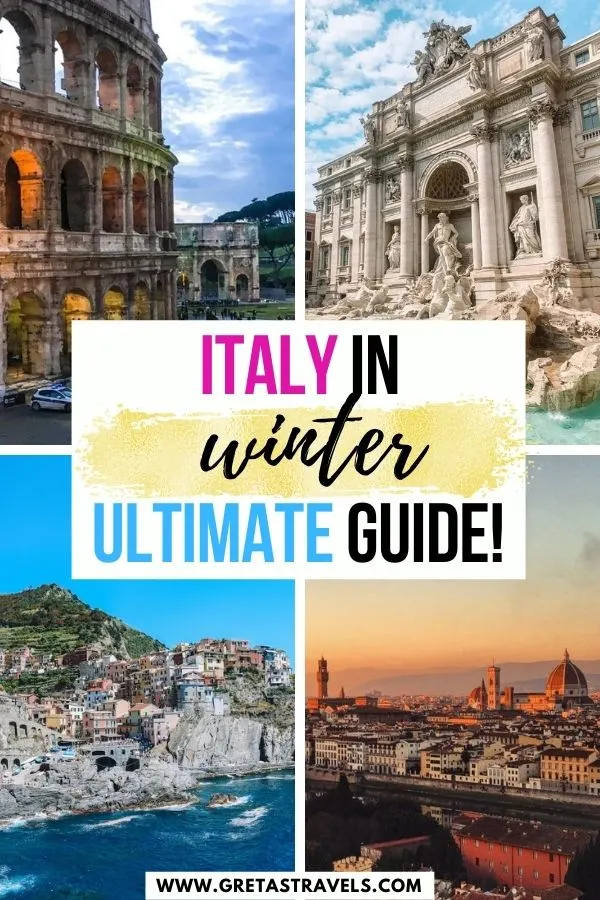Are you planning a winter trip to Italy, but aren’t sure what to expect? Then this is the guide for you! In this article I have outlined everything you need to know about visiting Italy in winter.
Being Italian, I have spent my fair amount of winters in Italy, and can confidently say it’s a great off-the-beaten track decision.
When visiting Italy in winter you won’t get the picture perfect idyllic Italian summer experience, but you can get something better!
While not exactly being a winter sun destination, Italy has a milder winter compared to many other European countries.
And from a tourist point of view, it also means less crowds. You can see all the main attractions in Italy, with less people around and for a cheaper price.
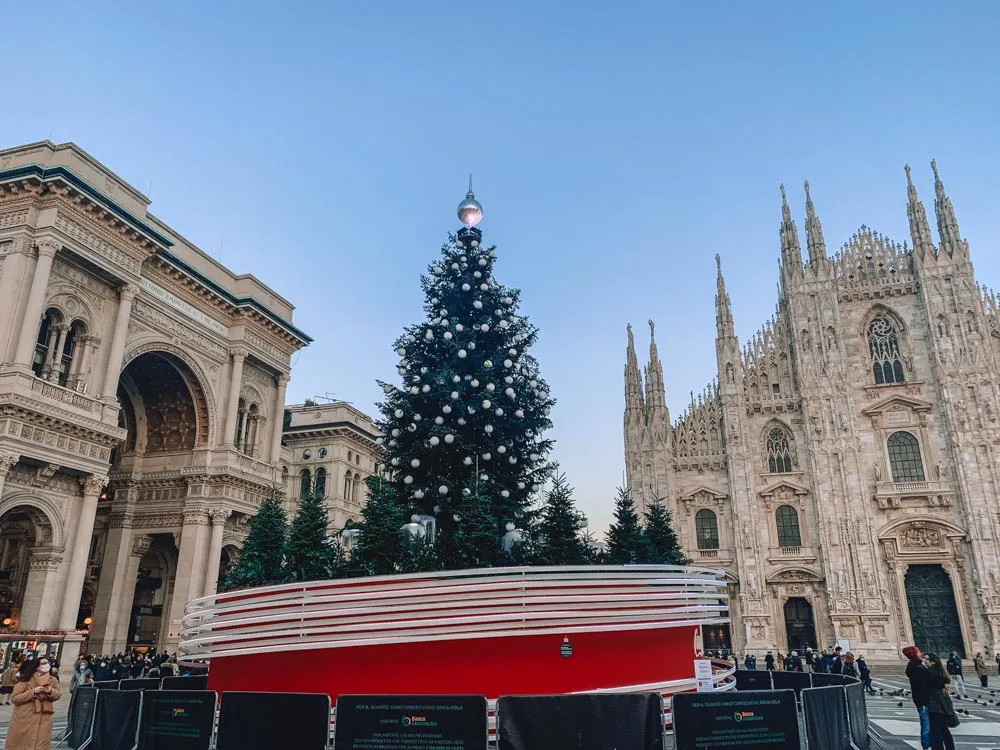
Piazza del Duomo in Milan at Christmas, with Galleria Vittorio Emanuele and Milan Cathedral behind it
Italy also offers a huge variety of destinations, which can suit different type of winter trips. Some travellers might want to hit the slopes of the Italian Alps, whilst others might want to enjoy the winter sun in Sicily.
Regardless of how you picture your Italian winter trip, you’ll need the information listed in this guide to help you make the most of it! In this guide I have included all the most important information to visit Italy in winter.
Including what weather to expect in different parts of the country, what to pack for winter in Italy, the best destinations to visit in Italy in winter, what holidays to plan for and much more.
So without further ado, let’s dive in and plan the perfect Italy winter trip!
Contents
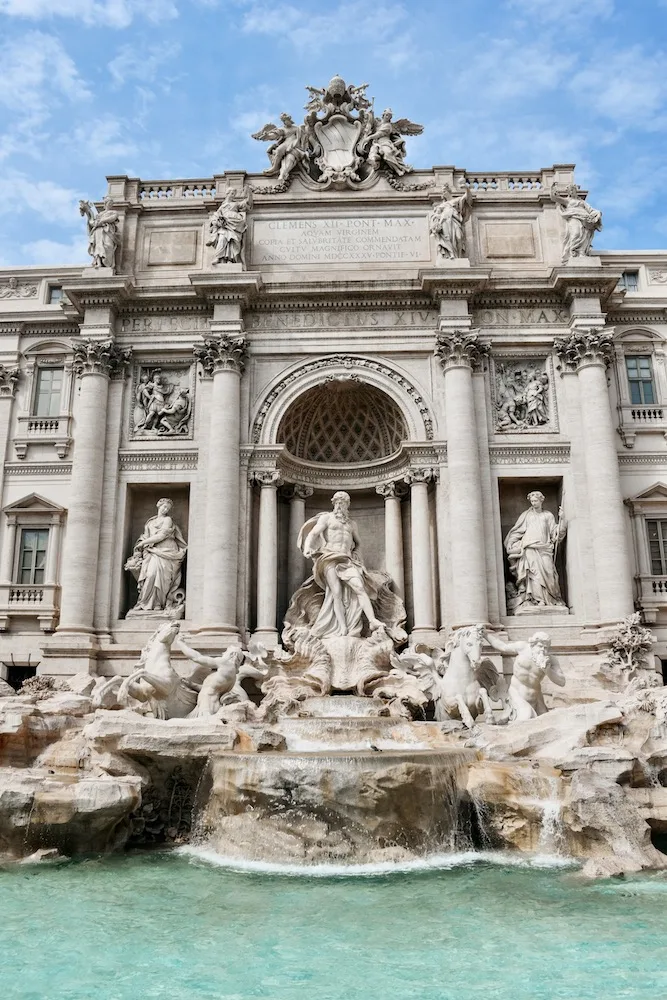
The beautiful facade of the Trevi fountain in Rome
Weather in Italy in winter
First things first, what kind of weather can you expect to find in Italy in winter? Despite summer in Italy being known for its hot climate, Italy can get very chilly throughout winter.
It might be easy to imagine this blissful Mediterranean peninsula and its islands being a land of perpetual sun and turquoise seas, but that’s not the case in winter. It also depends on where in Italy you plan on going.
When you visit the north of Italy in winter you can expect to find rain, wind, cold temperatures and sometimes even snow.
The south of the country is a bit more clement, but is still far from the European winter sun destinations you might hit for a tanning beach holiday.
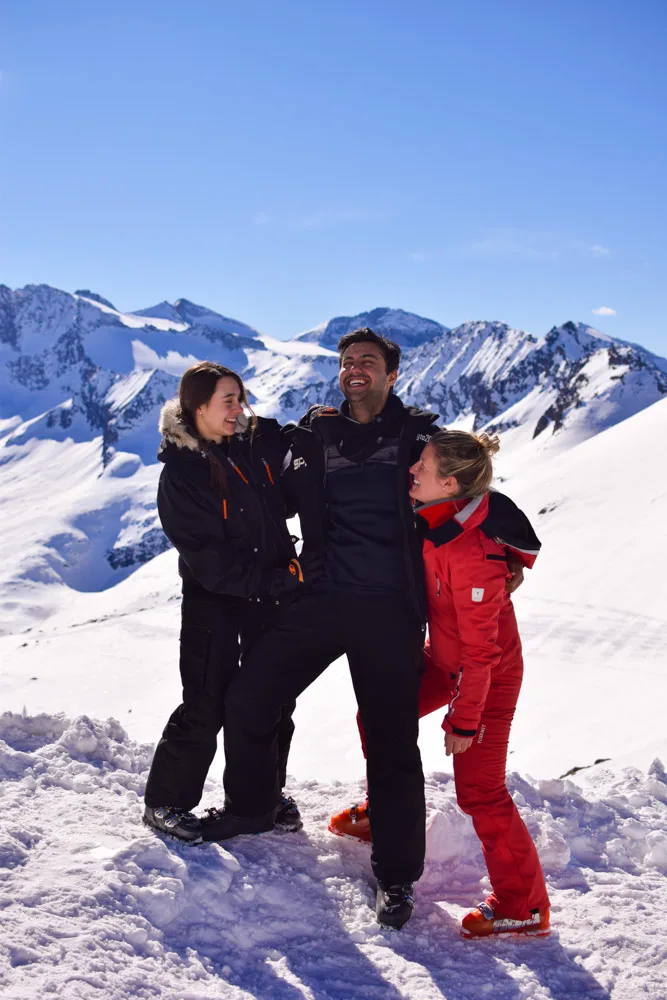
Enjoying the views from Ghiacciaio Presena with my friends Laura and Ramis, on our first Italy ski trip together
Weather in Italy in December
There’s a huge difference between the south and north, for example between Rome and Cinque Terre, but generally speaking December throughout Italy is usually cold.
Depending on where you are, you can expect snow, and there are often rainy days. There’s not much in the way of long, sunny days, so you’ll want to come prepared to wrap up warm against the elements.
December is a great time of year if you want to see what Italy looks like during the holiday season around Christmas.
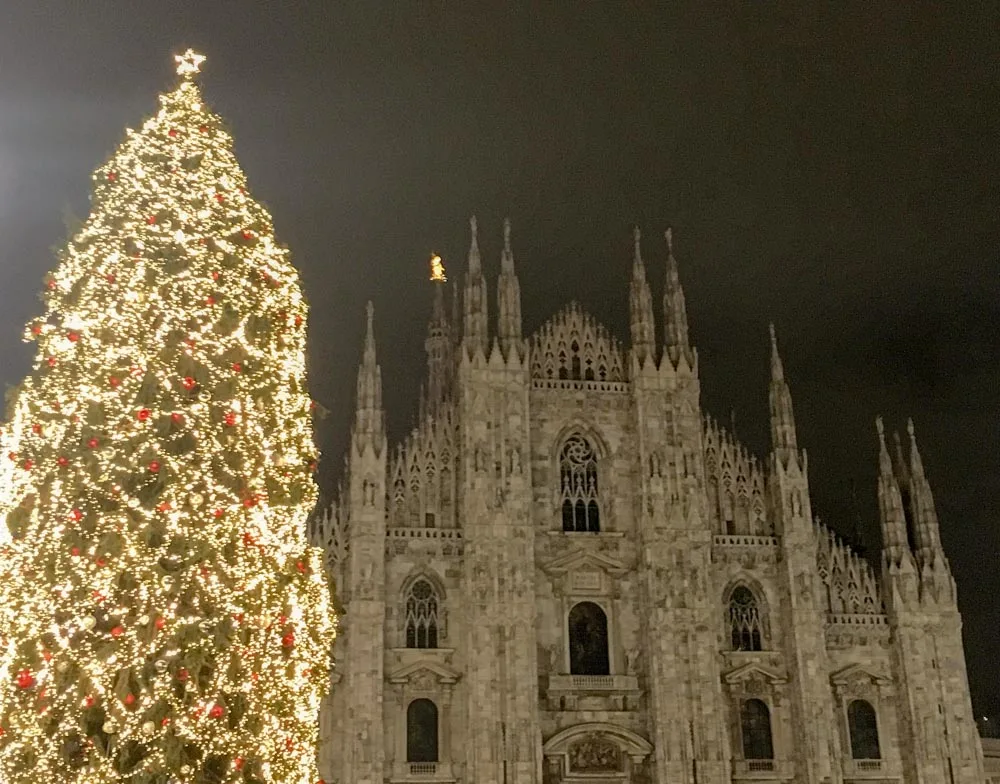
The huge Christmas tree of Piazza del Duomo with Milan Cathedral behind it
January weather in Italy
On average, January is the coldest month of the year in Italy. That means you can expect low temperatures across the board, with many rainy days and – in some places – snow.
There won’t be many crowds, so if you’re not a fan of sharing sights with lots of tourists, it’s a good time of year to come. But it’s definitely not the nicest weather-wise!
Weather in Italy in February
Things start to warm up (a little bit) in February. It’s a changeable month, with sunnier, milder days towards the end of the month, but temperatures can still be very low throughout February.
And snow can still fall – especially in mountainous regions (it’s a popular time for skiing trips). In short, you’ll still need your winter clothes when visiting Italy in February.
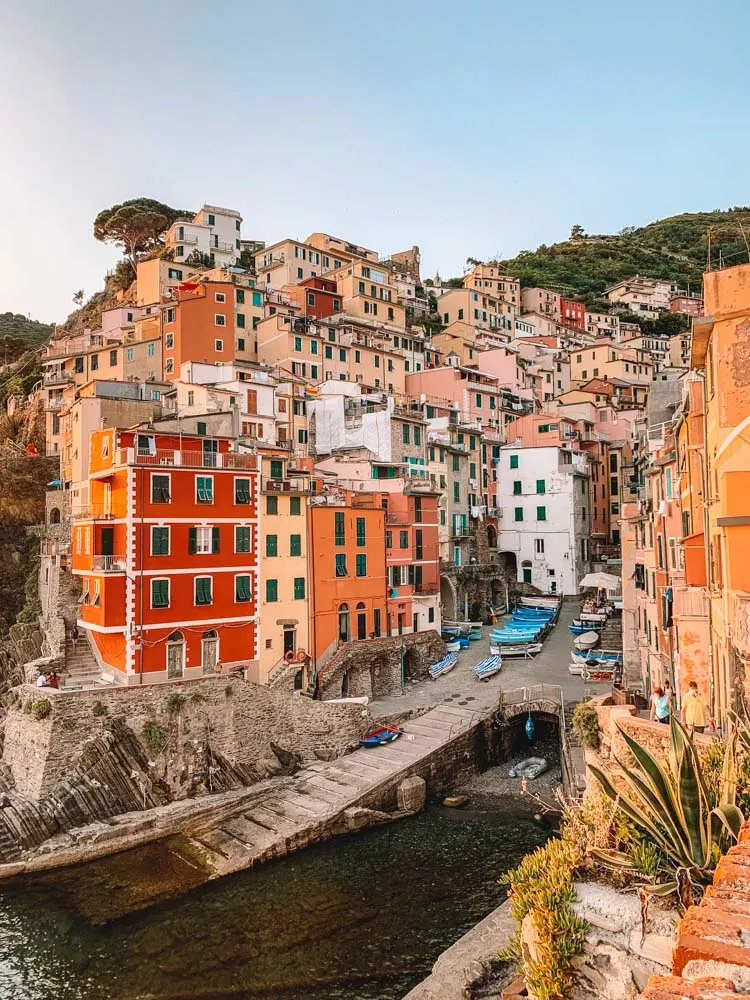
Sunset over the perched colourful houses of Riomaggiore in Cinque Terre, Italy
Holidays to expect in italy in winter
Despite being a cold time of year, there are many festivals throughout the late autumn and winter periods that make Italy an interesting place to visit in this chillier time of year.
In early November, for example, there’s Giorno dei Santi – otherwise known as All Saints Day. The day before, known as Dei Morti, falls on 31st October and basically matches up with Halloween celebrations abroad.
Don’t expect many full-on American-style Halloween festivities, but do expect plenty of seasonal food and other religious observances.
Next up is, obviously, Christmas. It’s a magical time of year anywhere in the world, and even more so if you’re heading to Italy for Christmas.
Wherever you are in Italy, you can expect to find Christmas trees, lights and decorations everywhere, but especially so in the big cities like Milan and Rome.
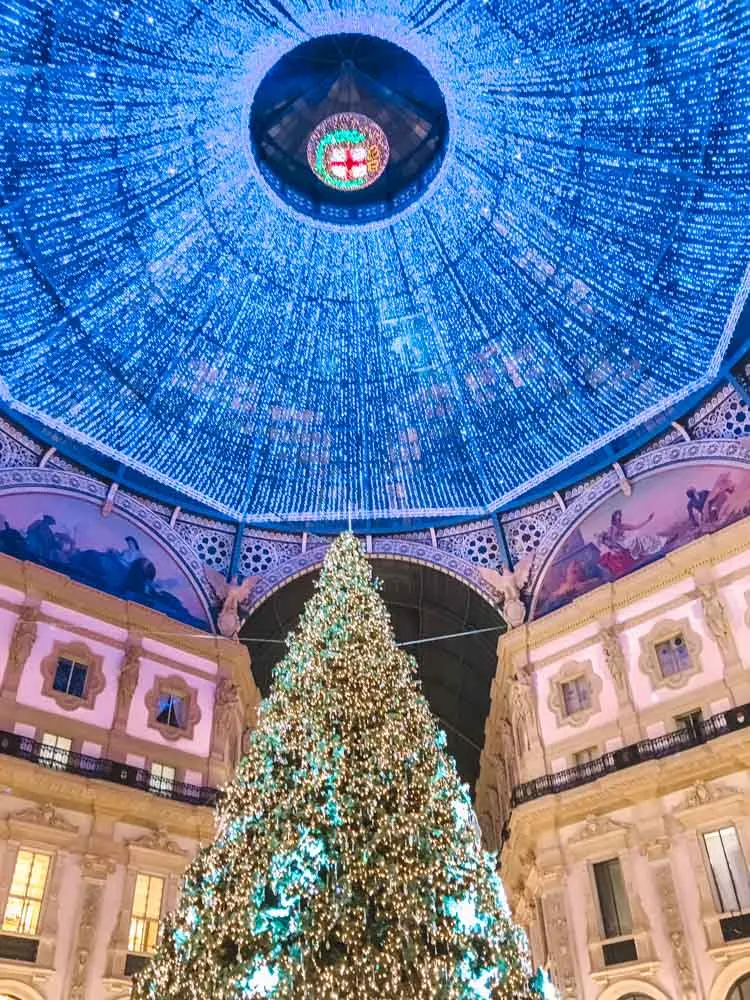
The Christmas tree and lights in Galleria Vittorio Emanuele, Milan
Christmas in Italy runs pretty much all the way to Epifania on 6th January (also a national holiday).
Epifania is a good witch that brings candy to good children and coal to bad children, and marks the end of the Christmas festive period in Italy.
Carnival is a big deal, too. This occurs usually at the end of February, maybe the beginning of March, depending on when Easter falls that year.
Expect great food and amazing costumes, especially if you plan to visit the Carnival of Venice. These are the holiday you’ll need to plan your trip around when visiting Italy in winter.
If you visit Italy on these holidays you’ll probably need to book accommodation in advance (some may be more expensive), and be aware that on public holidays some services and amenities may be closed.

Wandering along the canals of Navigli in Milano, Italy, by night
What to pack for Italy in winter
Packing is essential for making sure you have a good time in Italy in winter. Bringing along the wrong wardrobe will just not cut it!
It’s a good idea to bring plenty of layers. That way you can stay warm when you’re outside, but strip off a layer or two when you head indoors where there’s heating.
And with rainy weather expected throughout the country, bringing along a raincoat and an umbrella is a good idea.
A good pair of shoes, ideally with some level of waterproofing, will help for when you’re strolling around sightseeing or shopping. And even though it’s not summer, keeping hydrated is still important!
For that reason, bring along a refillable water bottle and refill at places like the nasoni (public drinking fountains) in Rome. Not only does this save money, but it saves on plastic too.
For more useful packing tips, make sure to check out my Italy packing list and my travel essentials!
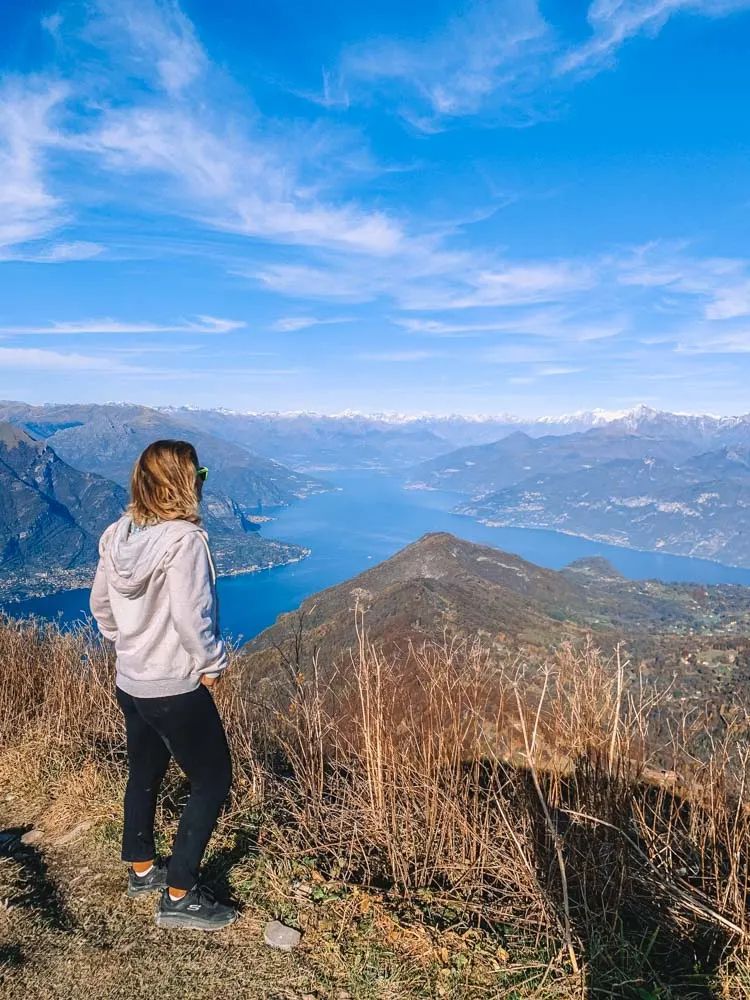
Enjoying the view from the peak of Monte San Primo in Lake Como, Italy
Best places to visit in italy in winter
After having gone over some key information about visiting Italy in winter, it’s time to dive into what the best destinations to visit in Italy are, with some average temperatures you can expect to find in each place.
Rome & Milano
Rome
Average high: 13°C (55.4°F)
Average low: 3°C (37.4°F)
Rainy days average: 7
Italy’s two largest cities are great places to visit during the winter season.
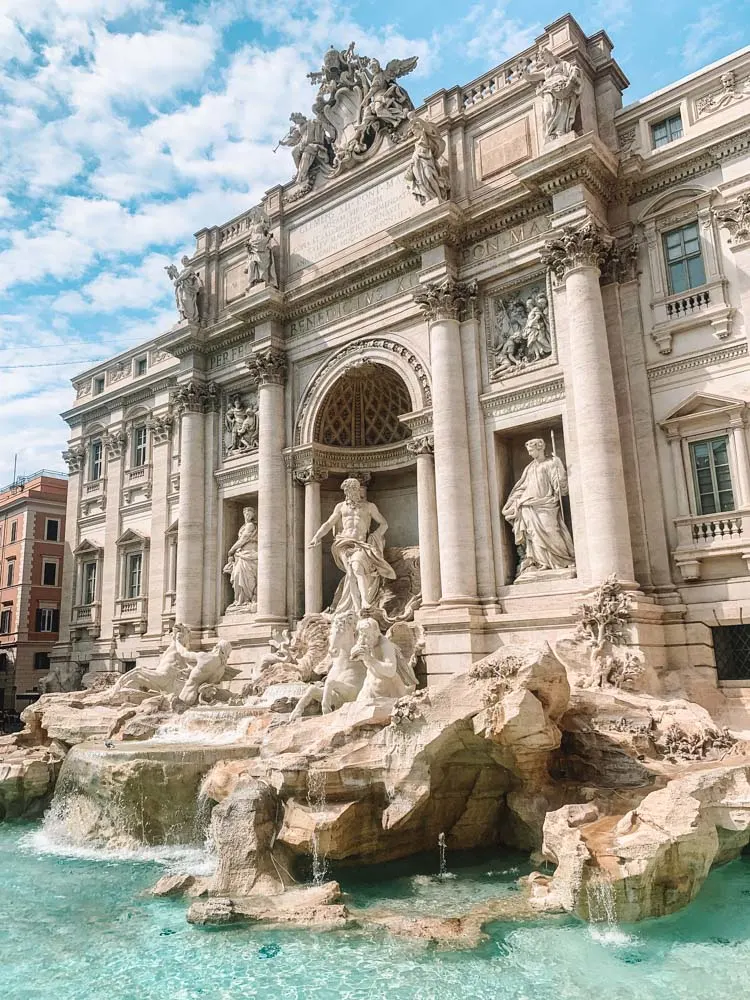
The beautiful Trevi fountain in Rome
I always suggest visiting Rome and Milan in winter, since you can still do all the same activities you would in summer, but with less people around and for a cheaper price tag.
Rome is packed full with incredible museums and historic sights, and with fewer tourists this time of year, you’ll have the city to yourself to explore on cold winter days.
And if you come around the Christmas period, you’ll be treated to a great atmosphere. Plus, it’s less expensive than visiting Rome in summer or spring.
Especially if you want to stay in one of those cool hotels near the Colosseum or Pantheon, or those luxurious Rome AirBnbs, it will be much cheaper to do so! Rome by night tours will also be less busy.
READ MORE: DISCOVER HOW TO SPEND ONE DAY OR THREE DAYS IN ROME!

The Colosseum in Rome at sunset
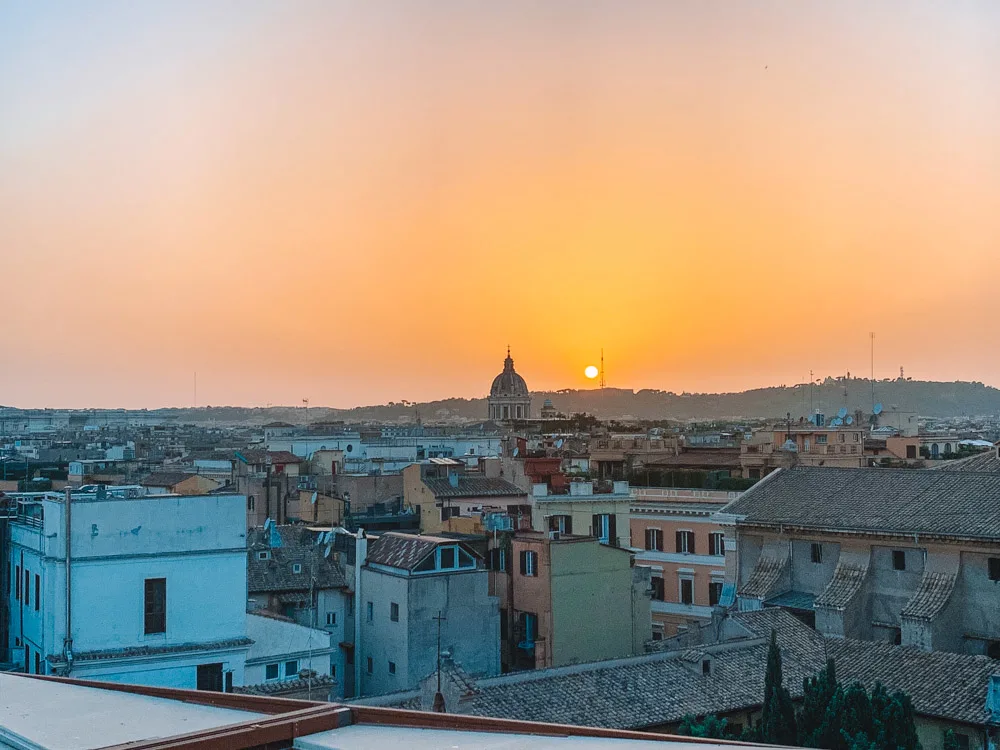
Sunset over the rooftops of Rome
Milano
Average high: 7°C (44.6°F)
Average low: 2°C (35.6°F)
Rainy days average: 5
The same goes for Milan. Although not chock full of the same ancient sites as Rome, Milan still packs a punch and is an enchanting city in the winter months.
As well as chic shopping opportunities and stylish hotels, Milan oozes culture – attending the opera here, one of the oldest in the world, is an amazing wintry event.
There’s also ice skating and Christmas markets to enjoy in Milan, too.
From Milan you can also go on a day trip to Lake Como. This famous Italian lake is very popular in summer, but in winter you’ll be able to enjoy your Lake Como itinerary and boat tours without the crowds!

Piazza del Duomo in Milan, Italy
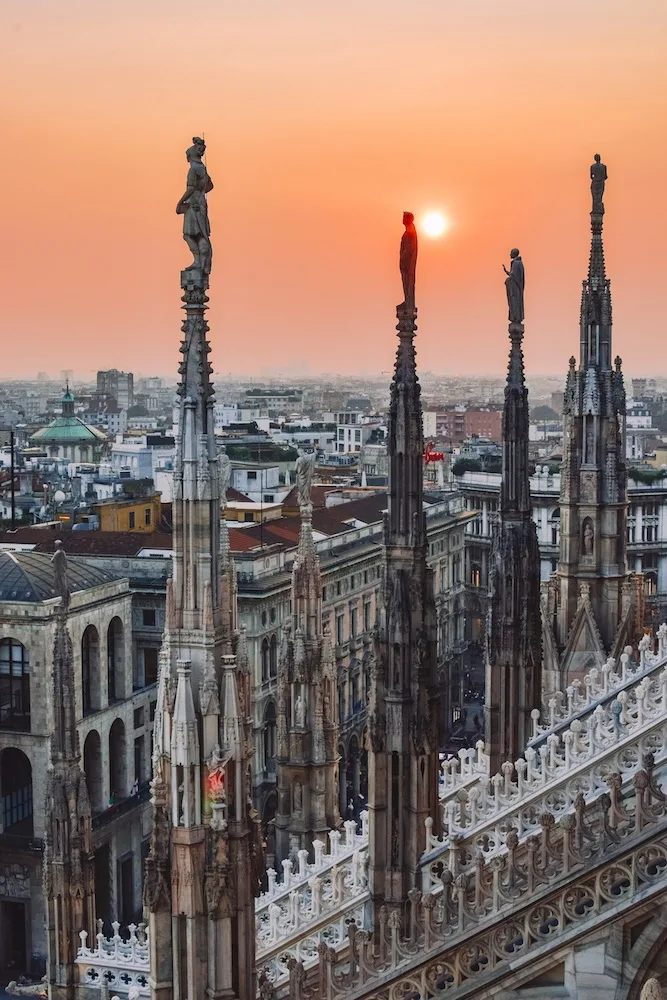
Sunset over Milan from the rooftop of the Duomo, Italy
Trentino & the Alps
Average high: 8°C (46.4°F)
Average low: 4°C (39.2°F)
Rainy days average: 2
For those who like winter sports and getting cosy at the apres-ski, then Trentino (or the Alps in general) is where you should be heading.
The city of Trento, capital of the region Trentino, is also packed full of history and culture, with art museums and plenty of restaurants to indulge in.
Hitting the slopes here means swinging by renowned ski resorts such as Madonna di Campiglio – and you don’t have to be an expert to make the most of the powder.
There will be plenty of chances for you to embark on a ski or snowboard lesson at many of the Italian Alps’ ski resorts.
This region is all about enjoying the mountain air, getting into the great outdoors, but also getting warm and snuggly over a long meal after you’ve been skiing – or heading to a spa to soak in a hot tub.

Skiing at the top of Ghiacciaio Presena close to Passo del Tonale
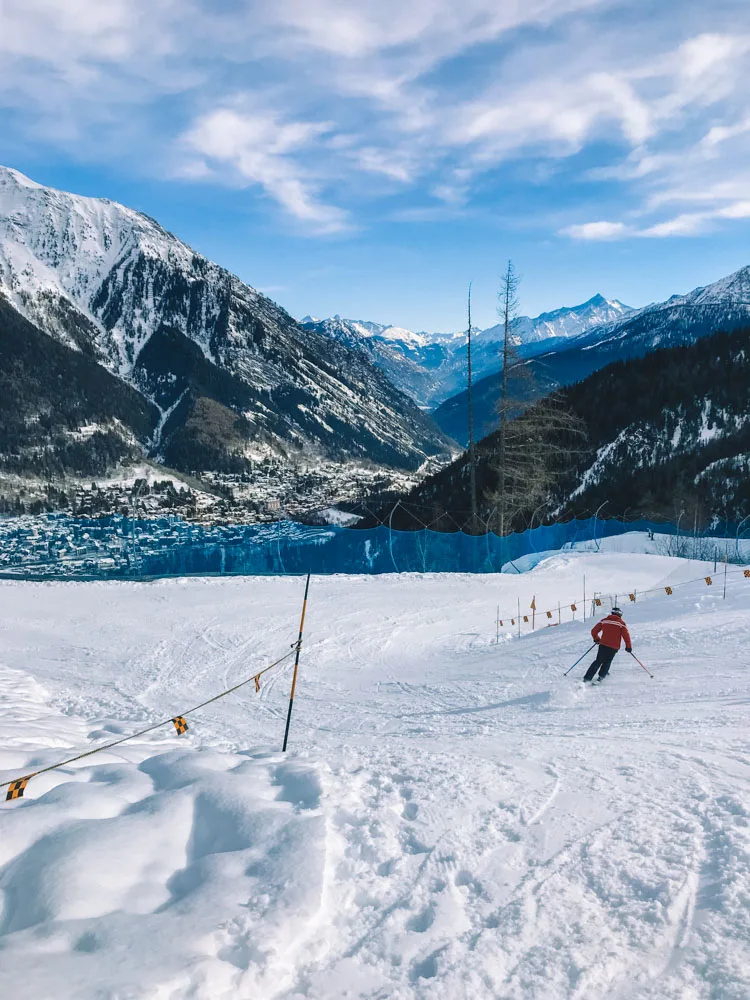
Skiing in Courmayer
Venice
Average high: 8°C (46.4°F)
Average low: 1°C (33.8°F)
Rainy days average: 5
Venice in winter may not be the place of sunny piazzas and glistening canals that you’d get in summer, but Venice in winter is a beautiful place to spend your time.
For one thing, during winter you won’t get the extreme summer heat, which is a big plus – and the crowds that go with it also won’t be there. Being less touristy really helps, as visiting major sights will mean almost no queues.
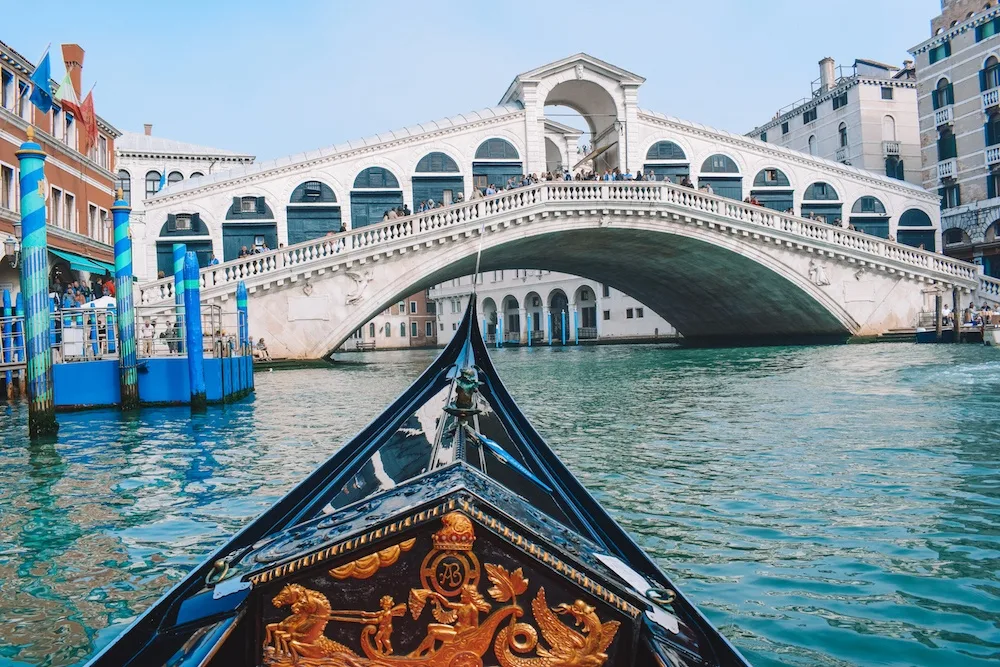
Our gondola ride took us close to Rialto Bridge
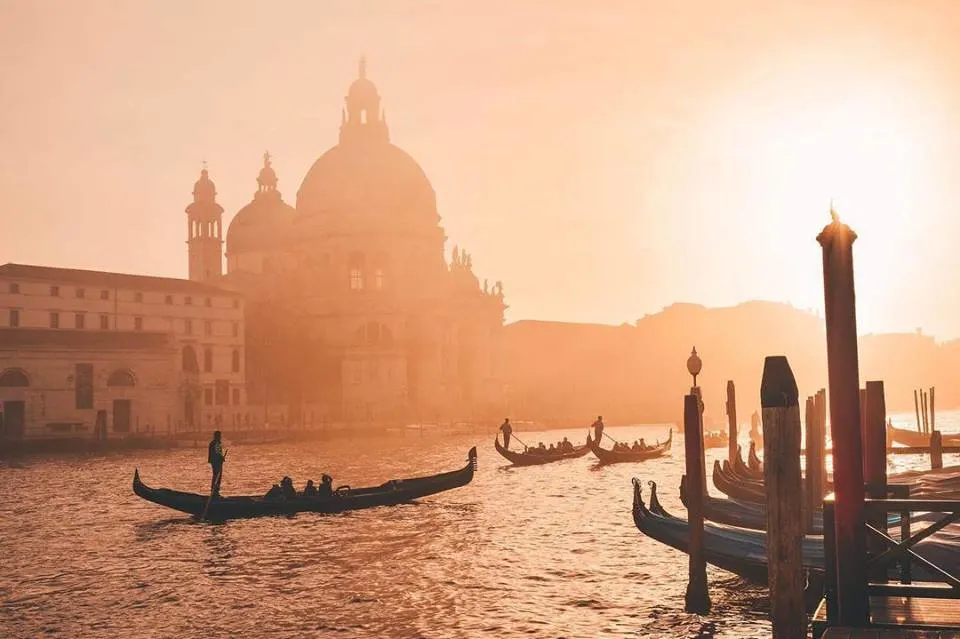
Sunset in Venice, Italy, a popular Mediterranean cruise destination
However if you are interested in visiting with the crowds, then you should plan your trip to Venice to coincide with Carnival. Here it’s all about elaborate masks, dressing up and hitting the streets to admire the spectacle.
Another spectacle is the acqua alta or high tide. This usually occurs in late November and sees Venice’s piazzas and streets flooded by seawater.
Though inconvenient, it does look cool. Places that do get flooded have raised pedestrian walkways so you can still access the city.
Even if it is a bit chilly during winter in Venice, it’s nothing a few good warm layers of clothing won’t cure.
You’ll love walking around Piazza San Marco and other iconic sights – they look as breath-taking as ever bathed in crisp winter sun.
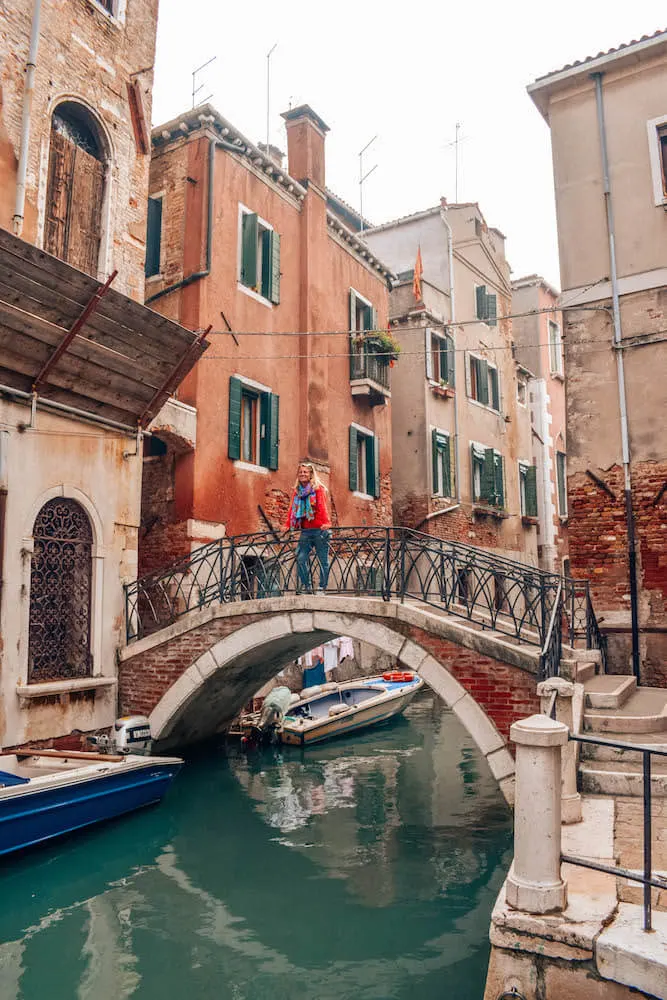
Exploring the side streets, canals and bridges of Venice, Italy
Puglia, Amalfi Coast & Matera
Puglia
Average high: 13°C (55.4°F)
Average low: 2°C (35.6°F)
Rainy days average: 4
If you’re looking for winter sun, then any one of these coastal destinations will do the job for you. Puglia in winter is fairly mild, though it’s not exactly beach weather, and is great for a winter getaway.
The quaint streets in this region’s towns make for a great place to explore – particularly over Christmas, when they’re fabulously decked out with decorations; local markets and live music make Puglia even more special at this time of year, too.
| READ MORE: HOW TO SPEND 7 DAYS IN ITALY |

The famous trulli of Alberobello in Puglia – Photo by Holly Farrier on Scopio
Amalfi Coast
Average high: 14°C (57.2°F)
Average low: 9°C (48.2°F)
Rainy days average: 3
The Amalfi Coast may be better known for the sun-drenched days of summer that many tourists spend here, but this iconic destination is still a gem in winter.
One thing to note is that, because of rough seas, ferries don’t always run in the winter. It’s best to pick one Amalfi Coast town to stay in, and spend time relaxing and enjoying the scenery.
At Christmas, streets along this stretch of shoreline are decorated with lights. There are big celebrations for New Year as well. On the whole, days are still nice and sunny: perfect for exploring the practically deserted towns here.
While you might not be able to go on that idyllic Positano boat tour or boat trip to Capri, you’ll still be able to see the ruins of Pompeii, hike the Path of the Gods, explore Positano and beyond.
However bear in mind that because of the lack of tourists, many eateries and hotels catering for them are shut at this time of year.
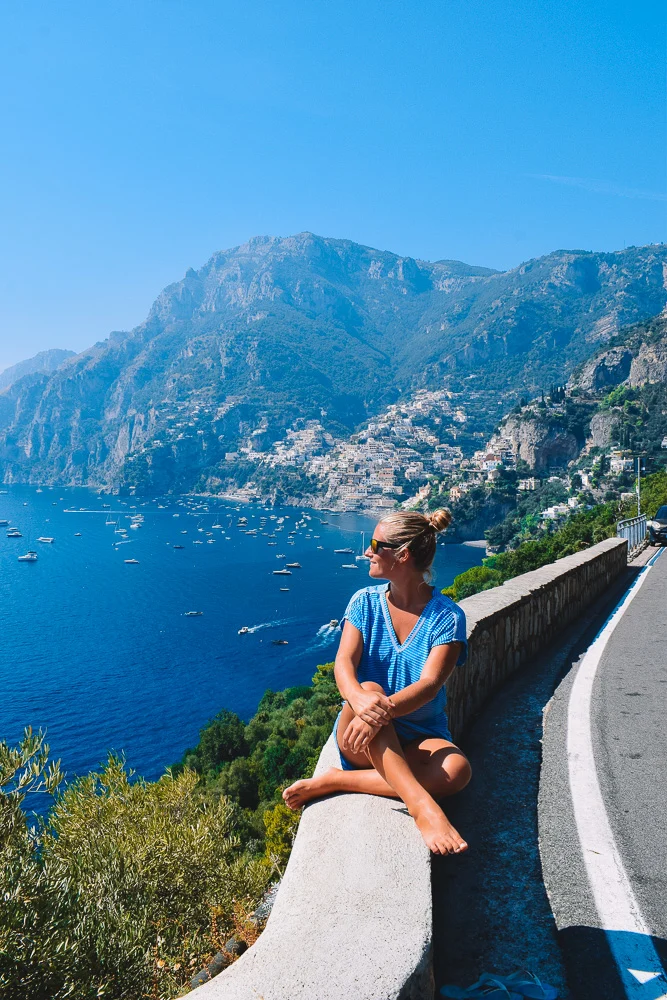
Enjoying drives along the beautiful Amalfi Coast, with Positano behind me
Matera
Average high: 11°C (51.8°F)
Average low: 7°C (44.6°F)
Rainy days average: 6
Elsewhere, Matera is cold, and sometimes sees snow, but it’s good for a bit of winter sun.
The major draw here are the cave dwellings in the Sassi area, which are usually crawling with tourists, but in winter you’ll basically have them to yourself.
Matera is lively during the winter, and hosts big celebrations in its piazzas.
| READ MORE: HOW TO SPEND 2 WEEKS IN ITALY |

The view over Matera from the viewpoint of the Parco Regionale della Murgia Materana
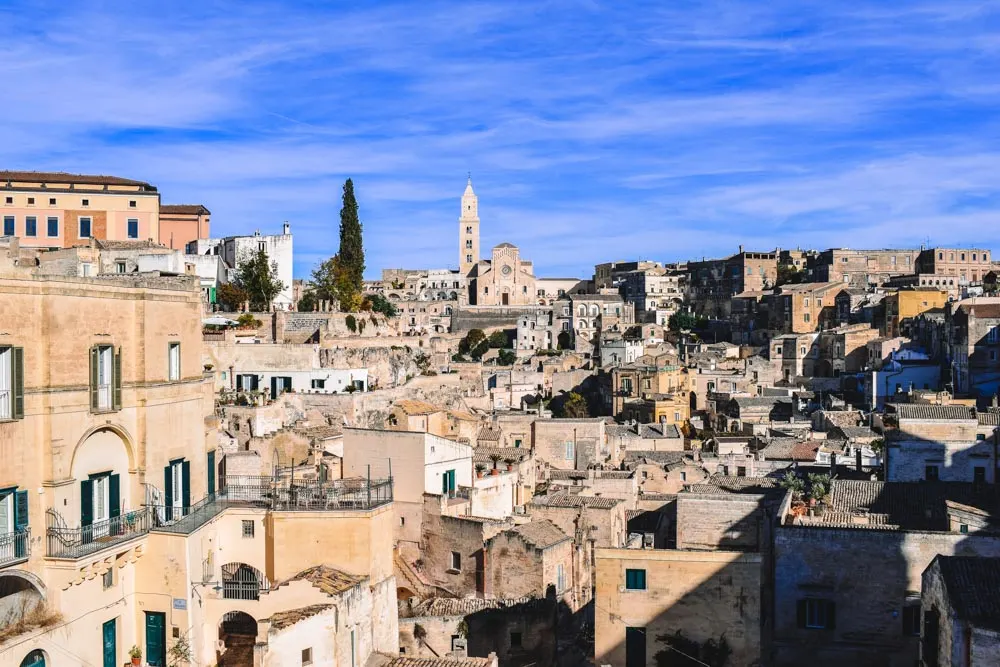
The view over the Sassi of Matera from Belvedere Luigi Gurrigghio
Tuscany
Average high: 13°C (55.4°F)
Average low: 5°C (41°F)
Rainy days average: 5
People might talk about the Tuscan sun (have you seen that awesome travel movie?), but in the winter this region is no less special.
From its charming villages to its famous cities like Florence, there’s no end of sights and experiences that will make your trip amazing.
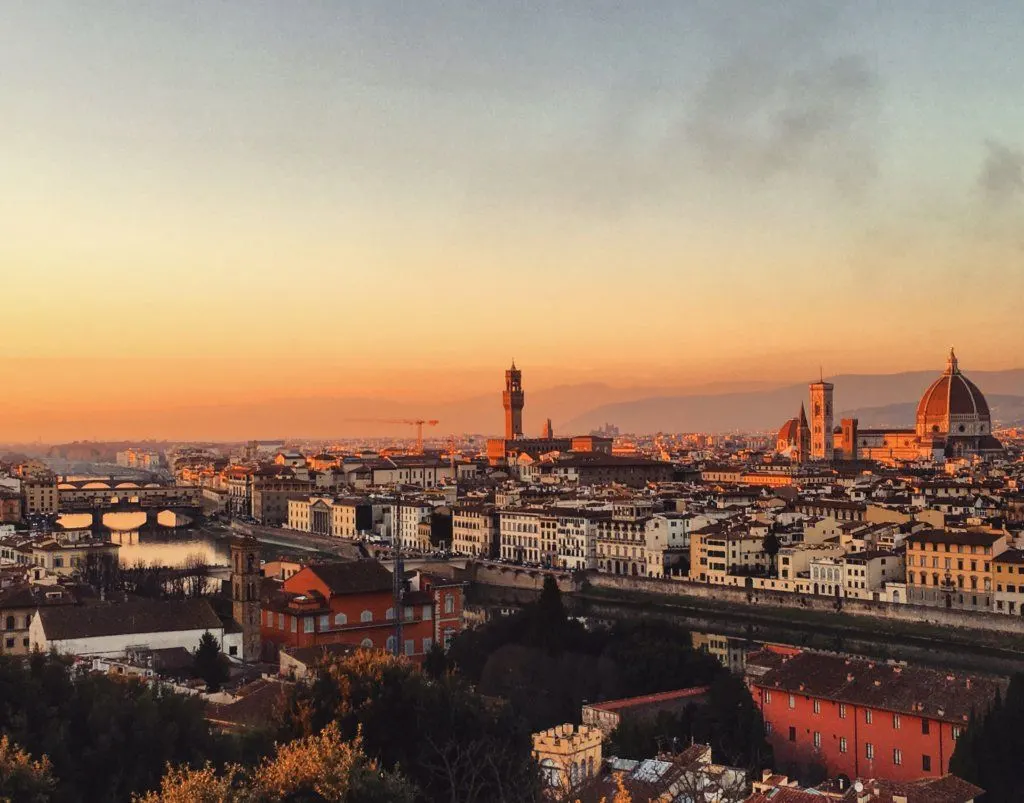
Sunset over Florence from Piazzale Michelangelo

View over the Tuscan countryside
Minus all the crowds of the high season (and there are a lot in Tuscany in summer), you can expect cheaper room rates and transportation costs, which means a much cheaper overall Italy trip cost!
Exploring Pisa, Florence and Siena without huge crowds is a breath of fresh air when compared to what it’s like in summer.
Visiting these cities’ big sights and museums packed with culture is much more fun when there aren’t hundreds of people all trying to do the same thing!
You’ll get to see a more local slice of life in these iconic cities, whereas road tripping around the Tuscan countryside means sharing the road with locals rather than day-trippers and tourist traffic.
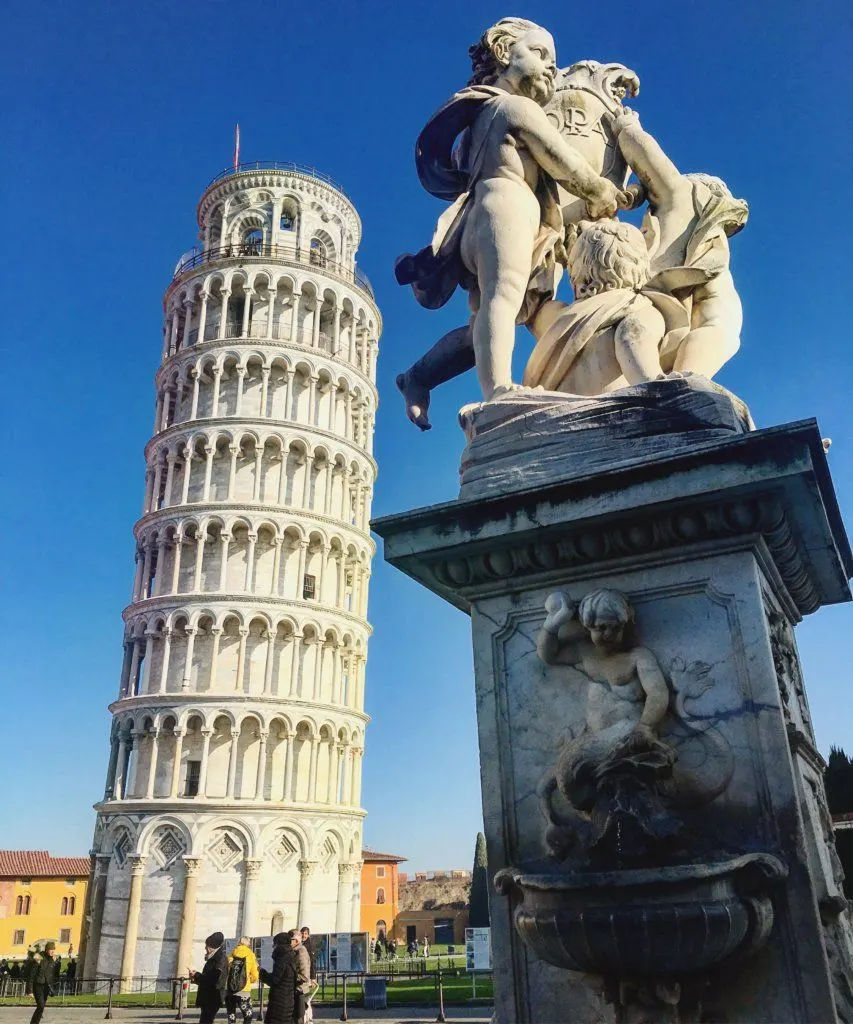
The Leaning Tower of Pisa
Sicily
Average high: 16°C (60.8°F)
Average low: 5°C (41°F)
Rainy days average: 7
Sicily is much warmer than the rest of Italy during winter. It’s a good time of year to come to soak up the island’s architecture, history and natural scenery minus tourist crowds.
But things still do get very lively, especially around the holidays. Christmas markets in its major towns, not least the principal city of Palermo, are a major attraction.

The Greek amphitheatre of Taormina at sunset

Ragusa Ibla seen from the neighbouring hill
Sicily has a lot of amazing food, which you can enjoy during the winter months, spending hours over a long lunch. The winter oranges in Sicily mean delicious freshly squeezed orange juice wherever you go.
There’s a lot of history on this island.
From ancient sites such as Motya, a Phonecian settlement founded in the 8th century BC, to ornate Norman palaces and imposing cathedrals, history buffs will have an awesome time lapping it all up during winter (no day-tripping crowds to share it with!).
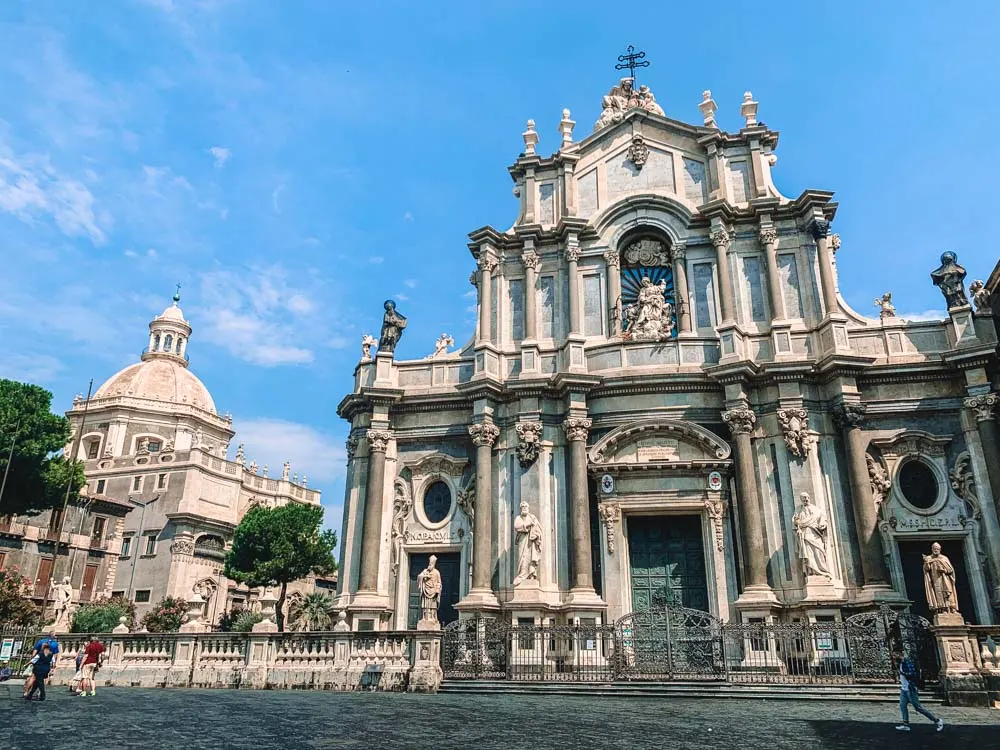
Piazza del Duomo in Catania, Sicily
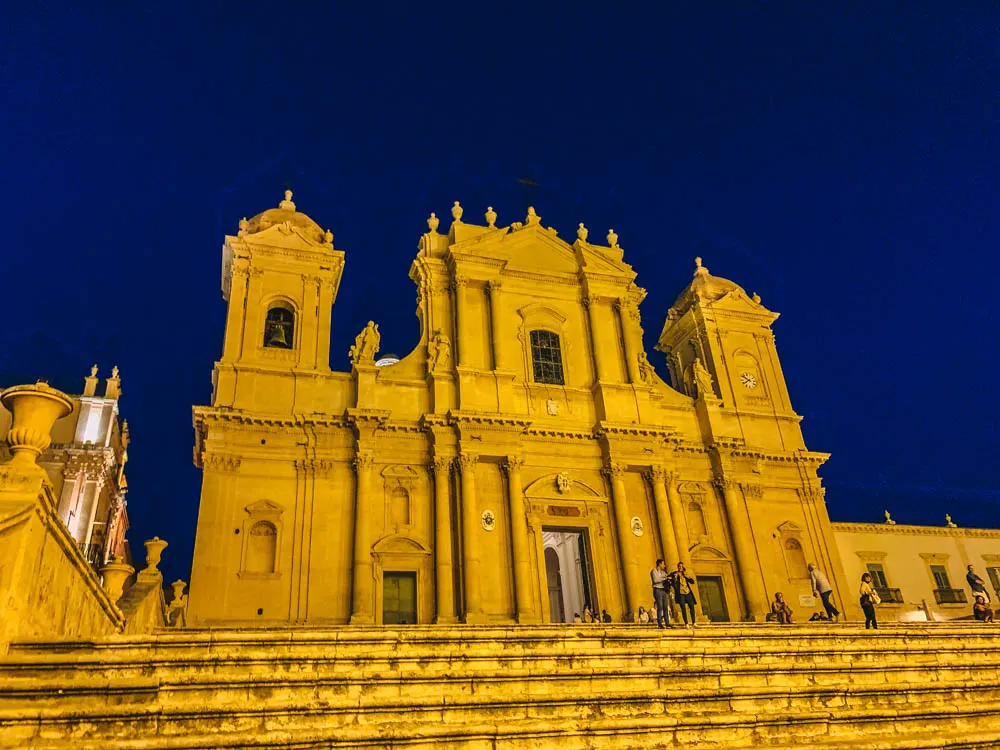
The main cathedral in Noto
Is winter a good time to visit italy?
Of course! Yes, it won’t be the stereotypical trip to Italy in summer, riding Vespas into the sunset and throwing coins into fountains, but it will be amazing.
You can have an atmospheric, unforgettable time anywhere you go, whether you choose to spend your time making the most of the ski season in mountain areas, or if you prefer to see what Italy’s cities – Rome, Florence, Milan – look like without tourists.
And then there’s Christmas: Italians do it well, so it’s a great time of year to come and join in the fun.
Last but not least, for those looking for winter sun, heading to the south of the country can yield some great results.
I wouldn’t recommend going to Sardinia, especially not if you plan on island hopping, or hiking in Cinque Terre, but other southern regions in Italy like Sicily can still offer a lot also in winter.
You won’t exactly be sitting on the beach, but you can still tick off some unique historical attractions from your Italy bucket list, and more than likely you’ll be experiencing something milder than your own country can offer in the depths of winter!
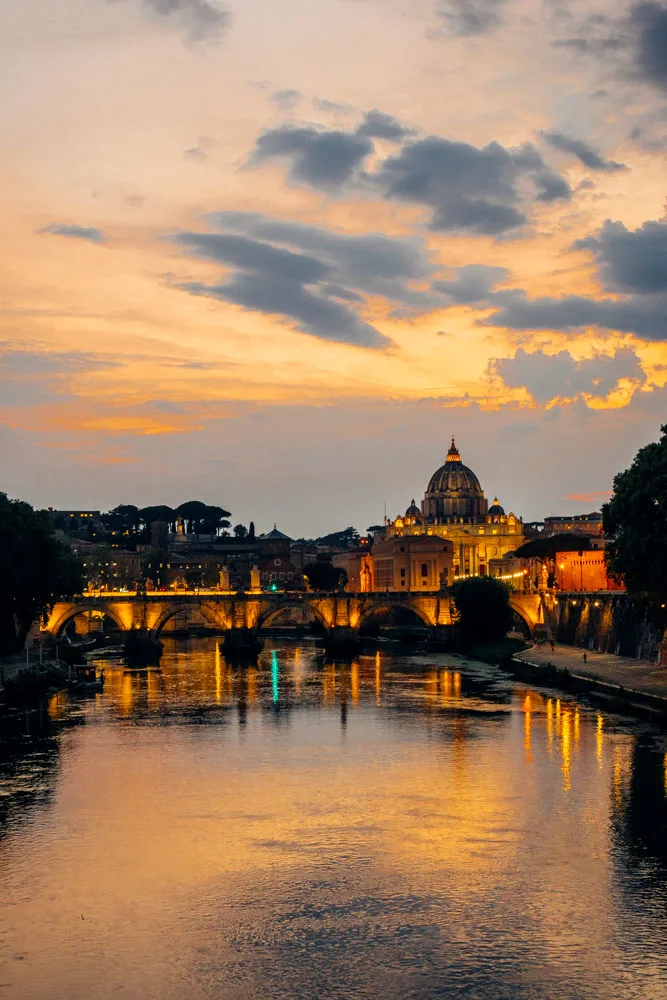
Watching the sunset over the Vatican and Ponte Sant’Angelo from Ponte Umberto in Rome
Final thoughts on visiting Italy in winter
There you have it, the ultimate winter in Italy guide! Have you been to Italy before? How did you find it? Let me know in the comments below!
In this article I tried to include everything you need to know about visiting Italy in winter, as well as highlighting where exactly in Italy you should be going in winter, to make the most of your trip.
Winter in Italy is great. Obviously the weather isn’t perfect, but it’s still better than many other European countries. Pair that with less tourist crowds and cheaper prices, and you have a winner!
Whether you choose to hit the slopes in the Alps, or wander around Italian cities, I hope you find this Italy winter guide useful in planning your own Italian winter vacation.
If you have any questions, just let me know in the comments below!
Before you go, make sure to check these 10 things Italians want you to know before travelling to Italy! And these great quotes about Italy to inspire your Italy in winter trip even more!
Enjoyed reading about the best things to do in winter in Italy? Pin it!
